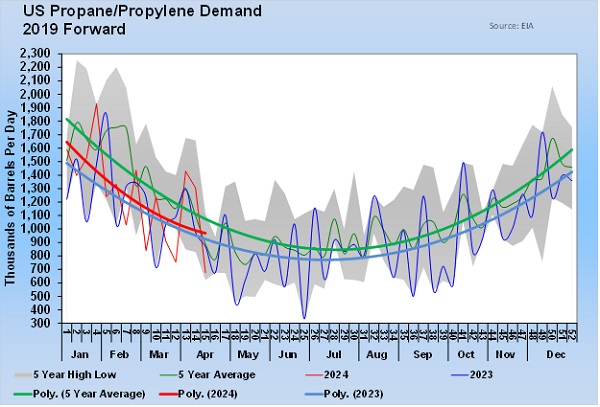New life in the cabinet heater movement
Sam McTier’s quest to help the industry commercialize an indoor cabinet heater fueled by propane from a composite cylinder is a hot topic yet again.
The latest action comes from the American National Standard Institute (ANSI), which in February approved a third-party standard for these unvented, portable cabinet heaters used indoors during emergencies – a victory for McTier, considering the ups and mostly downs he’s faced along the way.
For nearly 10 years, the propane industry veteran, shown above, has championed the cause of a product that could be used safely indoors and potentially burn hundreds of millions of gallons a year, according to the highest estimates in a 2004 market study funded by the Propane Education & Research Council (PERC).
The National Propane Gas Association (NPGA) and PERC spent time and resources – more than $1 million – to determine whether the industry should advance the new, seemingly lucrative market. But in the end, after numerous discussions at industry meetings, NPGA voted in 2008 to halt further work with the project. Safety concerns of both the propane industry and fire service organizations were too big of an obstacle to overcome as they fathomed the hard reality of consumers bringing propane cylinders inside their homes.
“I did everything I could to lobby for it, but it became controversial in the industry,” says McTier, always confident in the industry’s ability to develop a safe propane-fueled cabinet heater for use indoors. “[Many] marketers took a negative position on it.”
Still, McTier didn’t give up the fight and instead pushed for a safe, listed product that could be used indoors but only during emergencies. For years, NFPA 58 has permitted the indoor use of propane cylinders during emergencies, under certain conditions, but McTier argued that since no listed products were available for that purpose, the public was bringing its grills, generators and other unsafe appliances indoors, leading to carbon monoxide poisonings and other injuries.
A member of NPGA’s Technology, Standards & Safety Committee, McTier helped rewrite the standards for cabinet heaters used in emergencies – still getting pushback from the NFPA 58 committee in the process. Standard developer CSA Group approved them last year, and ANSI’s approval accredits the CSA process and perhaps brings the cabinet heater project one step closer to reality.
McTier says he was “hysterically happy when this all happened.”
“What the new standard does is it provides a comprehensive set of safety performance criteria that is specifically targeted to these portable heating units,” explains Bruce Swiecicki, senior technical adviser for NPGA. “The public will now have the option to purchase a product that has been specifically designed for indoor use during emergency situations when the permanent heating system is temporarily out of service.”
But first a manufacturer must come forward to design, build and test a product that’s intended for indoor use. McTier has connections in this area and talks of potential partners across international borders. He’s also hopeful for a funding source to help advance the project, mentioning PERC as a possible partner. McTier, a PERC member representing Propane Technologies LLC, believes the project can move forward by June under the right circumstances. PERC has confirmed its desire to revisit the market opportunity in the wake of ANSI’s approval.
The standards add size limitations on the heater and composite cylinder. Each unit has an overall size limitation of 15,000 Btus per hour, with maximum output limitations of 10,000 Btus per hour for bedrooms and 5,000 Btus per hour for bathrooms. The cylinder has a maximum capacity of 19 pounds of propane.
That this unit must contain and function only with a composite cylinder has long been a key component of the project. Research has shown that, in a fire, propane is gradually released from the walls of a composite cylinder, reducing the risk of a flaming jet of propane emanating from the relief valve and a boiling liquid expanding vapor explosion (BLEVE).
McTier says success in this project could further the discussion that began about 10 years ago – allowing the cabinet heater indoors permanently. For now, the unit gives propane another way to provide relief in emergencies. Our fuel was portrayed in a positive light last fall in recovery efforts following Hurricane Sandy.
“I feel that in times of duress, such as when snow or ice storms knock power out, having a listed product for indoor emergency use for consumers to turn to for keeping their families warm will certainly help avoid the deaths and injuries that we frequently hear about when people bring charcoal and propane grills and other appliances indoors to keep warm,” Swiecicki says. “I hope that we can save lives with the new appliances that will be available through the approval of this performance standard.”















